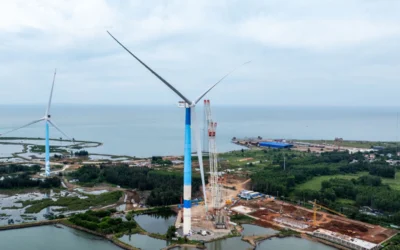OPINION by Aleksandra Tanaskovic, Senior ESG Manager at JAGGAER
Just as consumers assess the impact of their purchasing choices (energy, food, clothing and leisure) in light of the potential environmental impact, it is not enough for businesses to only measure the impact of their own operations, when assessing sustainability. Rather, companies need to ensure they are supporting ethical and environmentally sustainable practices throughout their supply chain.
Large organizations, with their huge contracts and suppliers from all over the world, have the potential to make a huge and lasting impact on the environment and communities, both local and international. Just think of the textile industry and the impact of research revealing that cotton from the Xinjiang region of China was found in 19% of 822 cotton-containing products sampled from February 2023 to March 2024, despite purchasing countries’ stringent forced labour regulations. In fact, the US Uyghur Forced Labor Prevention Act (UFLPA), effective as of June 2022, was designed to respond to demands by human-rights activists and consumers to protect the market from purchasing textiles that may have been produced under forced labour conditions.
The act also covers textiles imported from other countries that still purchase cotton from the Xinjiang province, accounting for 20% of the world’s supply, with deep implications on the whole supply chain. It’s clear that by strategically managing their supply chains, companies can significantly influence environmental and social outcomes. This begins with adopting sustainable procurement practices, where organizations prioritize suppliers that adhere to ethical, environmental, and social standards. For example, choosing and monitoring the performance of suppliers with a proven commitment to reducing carbon footprints, minimizing waste, fighting child labour and people trafficking can help companies meet their sustainability goals.

Aleksandra Tanaskovic, Senior ESG Manager at JAGGAER
One of the primary ways procurement can unlock positive sustainability is through the selection of eco-friendly materials, products and services. Companies can reduce their environmental footprint by opting for renewable resources, recyclable materials, and energy-efficient products. Additionally, procurement decisions can influence suppliers to adopt greener practices, creating a ripple effect throughout the supply chain. For instance, by demanding transparency in sourcing and production from their supply chain, companies can encourage their whole ecosystem to reduce emissions, manage waste better, and conserve water.
Large companies can leverage their purchasing power to foster the development of sustainable technologies and practices within their supply chains. This not only helps in achieving sustainability targets but also enhances the company’s reputation, leading to increased consumer trust and loyalty.
In particular, among the more interesting and innovative businesses tackling emissions reduction and social change are climate tech Small and Medium Enterprises (SMEs) and start-ups that are accelerating the transition to a sustainable economy. These companies often bring innovative solutions to market, offering technologies and products that can significantly reduce environmental impact. For instance, start-ups focusing on renewable energy, carbon capture, and storage, or energy-efficient technologies are essential in providing “first-of-a-kind” solutions that large corporations may not yet offer.
Precisely because they are pioneers, however, they tend to be smaller businesses and are unlikely to have a long market history. This means that procurement faces new challenges when choosing to engage with them and needs tools that are able to adapt risk versus benefit considerations to this new need, weighing up sustainability, GHG emissions and DEI credentials against shorter historical financial records, fewer references and a lack of historical data.
Procurement teams therefore need to be equipped with tools that enable them to analyse sets of data that were not typically considered. These then need to be carefully offset against data that will help evaluate risk where company records may lack insight. Broadening data sets analysed to include information from the market, IoT, or Big Data can help manage supply chain risks such as those posed by new players to the marketplace (smaller, younger businesses for example).
Evaluating a business’s DEI credentials, for instance, is a topic particularly important to JAGGAER, where women account for 42% of the global workforce and 43% of the Executive Leadership Team, compared with the IT industry standard of 25% in 2024. DEI analysis might require sourcing company organizational charts and other documentation highlighting the number of women in leadership. Carrying this type of task out by hand can be complex and time consuming, but leveraging AI and Machine Learning may help speed these processes up and ensure they are accurate.
Similarly, while Scope 1 and 2 emissions are directly connected to the supplier company, Scope 3 emissions may relate to end-user or supply chain emissions and are thus harder to unearth. An intelligent procurement system can help increase transparency around these emissions. Improving communications with suppliers and targeting category hotspots that are high-risk areas for scope 3 emissions are ways in which procurement can contribute to creating greater accountability for the whole business.
Such efficient, real-time information retrieval and analysis at scale can now be automated and streamlined with AI-powered procurement solutions. AI has in fact the potential of being able to analyse at speed huge volumes of data that might take a human being weeks to interpret. Similarly, AI can be used to suggest and automatically introduce ad hoc clauses and conditions for contracts with new types of suppliers.
Harnessing the potential of procurement to drive sustainability within business is key not only to creating lasting and impactful change, but to remaining competitive in a market where consumers are increasingly educated and aware of their purchasing power’s effects on the environment and society.




